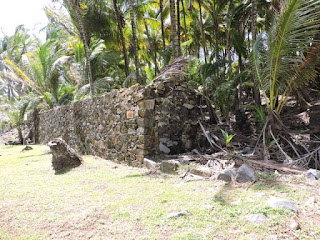Originally a leper colony, the Salvation Islands are made up
of three islands: Isle Royale, Saint Joseph and Isle du Diable (or Devils
Island). Located seven miles off the coast of French Guiana, a penal colony was
formed on the archipelago by the government of the Emperor Napoleon III in
1852. It soon became home for the worst criminals, political and military
prisoners and repeat offenders of the French nation. Officially known as “Bagne
de Cayenne” (Cayenne Penal Colony, named for the capitol city of French
Guiana), its prisoners soon coined the name Devil’s Island. Because of harsh
conditions, isolation and disease, many of the more than 80,000 prisoners sent
to the prison were never seen again. The remote location and the surrounding
open sea proved to be very effective in preventing prisoner escapes from the
island. There were only two successful escape attempts from Devil’s Island The
first was accomplished by Clement Duval, a French anarchist who escaped the
island in April 1901 and found sanctuary in the United Sates where he spent the
remainder of his life. The second received much more publicity. Convicted
murderer Henri Charriere successfully escaped the island in 1941, and his
exploits were described in the popular book and movie adaptation, “Papillion”.
After 1938 the government of France stopped sending prisoners to Devil’s
Island, and in 1952 the prison was closed down permanently. In 1965, the French
government transferred responsibility of the islands to the newly founded
Guiana Space Centre. More than 50,000 tourists come to this island annually to
visit the prison and the Space Centre.
This is one port where there is no tour. We are Ile Royale,
not Devils Island. Devils Island is where they sent those that were in solitary
confinement. This is where Henri Charriere was kept. We set out to walk the
island. Here is the map that they gave us.
We were anchored and had to take a tender to the island.
As we walked around the island you could see Devil’s Island,
but they discouraged you from swimming over to it because of sharks and
currents.
The first structure we saw was the workshop they used.
Next were the pigpens.
Then the slaughterhouse and the prisoners pool, which is in
the ocean.
Before getting to the main buildings we went by the
Guesthouse.
Now we walked through a denser area on our way to the main
buildings. And there on the path were the squirrel monkeys. One was rather
large and we figured he was the male.
Once you get to the main building area there are most of the
buildings where they did their business. There was the chapel (under
renovation) and the gendarmerie (police).
Once you get to the main building area there are most of the
buildings where they did their business. There was the chapel (under
renovation) and the gendarmerie (police).
And the hospital where they worked. The hospital was not for
the prisoners, but for the staff. If a prisoner had a health issue they sent
him back to the mainland. They often faked illness to get to the mainland and
try to escape.
We then went to the condemned prisoners quarters. In the
picture of the yard area you will see four stones on the ground. This is where
they would behead the prisoners.
Along the way we saw some agouti (big rats on stilts) and a
peacock.
And of course there was a hotel with a gift shop.
We then headed back to the tender. It was very hot. And just
before boarding, we saw some sea turtles.
We are now off to the Caribbean where we will visit our last
three ports before coming back to Ft. Lauderdale on March 11.



























































Interesting! Looking forward to seeing you soon.
ReplyDelete